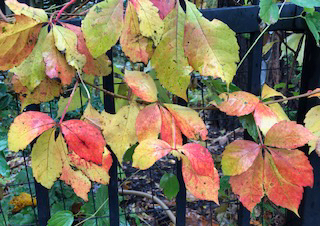No guarantees but so worth the try!

Last years' Philadelphia Flower Show featured this incredible art -- part of the "Bird Brigade," a STEAM (art and science) project designed to inspire 3rd through 12th graders to become advocates for birds. Kudos to the non-profit Fresh Artists for the wildly successful project!
Inspiring in so many ways. I left vowing to learn which native plants would attract the iconic birds.
As a self taught gardener, I only write about plants I have grown and projects I have tried. If I have not grown a plant, I do my best to note that. Well, this is a topic I have no experience with: not a birder, have never seen an oriole, enough said!
My first stop when looking to learn about plants and birds of the Chesapeake is always with Mike Burke, a regular columnist with the Bay Journal, the source for all issues Chesapeake. Mike's columns provide a wealth of knowledge with just the right amount of detail about birds. Turns out, Mike, a very talented birder, has seen an oriole or two in his time. The good news -- he even saw them in his urban backyard inside the Washington beltway a ways back! Read all about it here. Mike tells us orioles are really only resident in our area for about 4 months in summer. In spring and fall they are on the move - headed to and from southern climes in Central and South America. He says they forage for food, mostly insects and caterpillars, in open woodlands and trees lining stream banks. So, if you are an urban gardener, as I am, seeing an oriole will not be the norm, but hope springs eternal!
I canvassed what experts are saying and found consensus on these tips for attracting orioles to your garden with native plants. Spoiler alert: it does involve a lot of tall trees!
One place to start is the Audubon search tool to look for native plants that support the type of bird you are interested in by zip code. So I searched my zip code for orioles and native plants. Pretty cool.
The top ten for my zip code are serviceberry (Amelanchier canadensis), five large deciduous trees, an evergreen - American holly (Ilex opaca), two shrubs - American plum (Prunus americana) and hazelnut (Corylus americana), and pokeweed, (Phytolacca americana) a large perennial often considered, well, a weed, but why? We are not sure. All of these provide fruit, most provide nuts and all but the pokeweed support caterpillars. Makes sense.
With a small garden, several serviceberries already growing and little space for more large deciduous trees, I changed the search to look for more shrubs to support orioles. Witch hazel (Hamamelis virginiana) and chokeberry (Aronia arbutifolia) were added to my list.
For fun, I searched vines for orioles and native honeysuckle (Lonicera sempervirens), maypop vine (Passiflora incarnata), and Virginia creeper (Parthenocissus quinquefolia) popped up. For tips about growing maypop please check here. What's on your list?
Now, for a bit of a reality check. Maryland's Department of Natural Resources reminds us orioles are often drawn to tall tree tops for breeding. DNR does say it is possible to see orioles in your backyard though. Orioles eat caterpillars, beetles, scale insects, wood borers, aphids, sawfly larvae, and grasshoppers and sometimes fruit. They would add blueberries (Vaccinium corymbosum) and blackberries (Rubus odoratus) to the shrub mix.
If you add some of these oriole friendly plants to your garden, I can't promise you will see an oriole. I can promise you will have made your garden a better place, and created your very own Birdland!
Thank you for gardening for the Chesapeake.
























Kaiser OTC benefits provide members with discounts on over-the-counter medications, vitamins, and health essentials, promoting better health management and cost-effective wellness solutions.
Obituaries near me help you find recent death notices, providing information about funeral services, memorials, and tributes for loved ones in your area.
is traveluro legit? Many users have had mixed experiences with the platform, so it's important to read reviews and verify deals before booking.